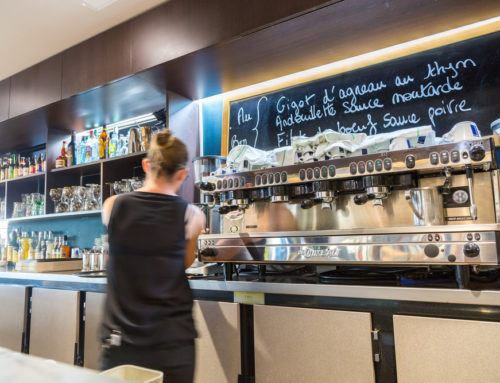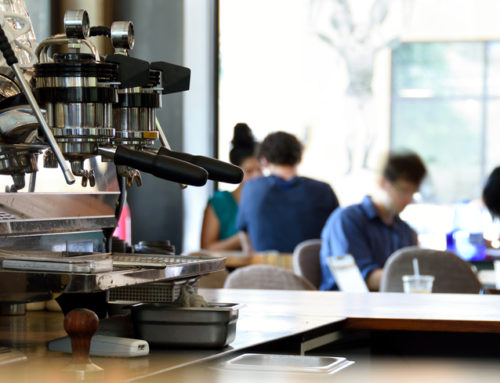It’s inevitable, after a busy period, service will eventually slow down. If it didn’t, your staff would be overly exhausted and no prep would be done for the next stage of work. Whether it be meal prep in the kitchen, a thorough clean throughout the venue, stock take or polishing utensils, these ‘dead’ periods are needed. For an establishment that has been running for quite some time, the busy times will be known to staff, allowing the team to know when to prepare and when to solely focus on service. For some tips on how to overcome and get through these times in the most efficient fashion, we have jotted down a few tips below;
Recovery:
All problems and issues to do with money, customers, food waste or staff complications can be sorted out in this cool down period. Having no customers walk through those doors will allow your staff do speak with each-other and sort out whatever went wrong in a calm setting. Also, a till count is necessary in this period, your managers or floor supervisors will need to get counting to make sure that everything is in order before the next service begins. Being able to renew the tills, clean up the POS System, converse with the kitchen to see what dishes remain and what’s gone will be a big help for servers. Another benefit of this break is if your team experienced a ‘bad service’ or a ‘hostile customer’ who drained their energy or put them in a bad mood- by having a calm atmosphere all words can be spoken in privacy and venting can occur to the management team.
Get Cleaning:
After morning/afternoon or evening service, there is definitely a deep clean needed, utensils must be changed, washed and polished in order to be used for the next round. Also, floors and tables must be washed and swiped over in order to give that fresh look once again- the main goal is show no remnants of past customers. The worst thing your staff can do is leave old dishes on the table, mangled cutlery or messy food prep left untidy in the kitchen- it’s a bad look and doesn’t align with health standards. Also a session of cleaning allows staff to clear their minds for the next round of service, especially if they are undertaking a double shift!
Stock Count:
If prior service was moving quickly, then so was your stock. Usually a stock count should be made twice throughout the day, once through day time shift then the other at closing time in order for the next morning. This allows the next group of staff to enter their stations smoothly and not have to worry about packing shelves and restocking beverages whilst customers are walking through the door. During the weekend especially it’s always better to accommodate for certain items more than others, especially if you know you’ll go through them without hesitation. It’s all about knowing your customers and which items they prefer- that’s the name of hospitality and that’s what will get you through a faster and smoother service.
Maintaining constant service…
Dependent on the size of your restaurant/café and also the menu itself, your service flow will be affected in different ways- it’s a custom circumstance in most cases. For instance, for a small restaurant that seats 50 people max, and only focuses on a dish of meatballs, pasta or pizza served in a variation of ways and flavours- then their meal prep will be faster, stronger and more detailed for each running service. Noted that these types of businesses may get boring for chefs and servers because the menu can’t be tampered with, or customers get too much power within arranging their own dish- however in terms of sales, service can boom. Maintaining a specialty towards a certain dish will allow your chefs to truly improve over time, allowing the food to gain an individual taste and customers to know that your venue will serve their meal the way the prefer every time. This type of service contains a certain ‘fast food’ concept, however their dedication to the dish itself and the service of each customer’s experience will raise their reputation and numbers to a new level.
When this type of venue begins to gain a good reputation and customers begin flooding in throughout the day/night, owners are known to create a system of shared seating and allocating smaller groups of customers to specific locations. If you come in a group of 2 and there is a table for four waiting in front of you and the server says you must wait, it’s because they know they will get that larger group and make more money. This in turn is a bad look and something I can’t stand about this type of popular service, the whole industry was built upon giving customers a great experience, not looking at them like bundles of cash. To avoid this type of behavior, it’s better to integrate more 2 seater tables, so that your staff can move around chairs when needed and add on extra tables if a group wants to extend. This structure creates a better vibe- however, there needs to be a though out system created for the shape of your venue to carry out these steps successfully.
So whether your venue caters to a specific menu or your kitchen has reign over their dishes, your customer flow is all dependent on the area and venue itself. And in order to maintain a successful system, use those slow periods to your advantage, by creating a better atmosphere and regrouping for the next better service.









Leave A Comment